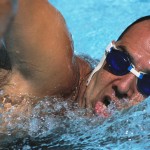This article is sponsored by PRO Compression. At PRO Compression, foot comfort runs in our veins. We’re all about giving our customers an edge, providing you with socks that will enable you to perform better through improved blood circulation for the most extreme run, weekend jog or golf outing. Wear PRO Compression socks while flying to events, while sleeping, and during and after the races to help increase blood flow, reduce inflammation and remove lactic acid. Athletes tout PRO Compression as their socks of choice due to the built-in “stabilizing zone” for added support and the socks’ slightly padded heels and toes that eliminates hot spots and blisters. PRO Compression socks should play a major role in all athletes’ racing strategy. Our socks are the result of years of innovation and designed to keep you ahead of the competition. A better footwear choice is simply not available. For more information on PRO Compression socks and other compression products contact Eric Smith at: eric@procompression.com. Use discount code YOURWAY20 for 20% off any Marathon Compression Sock or Trainer Low Running sock at http://www.procompression.com/
Triathlon Race-Day Tips by Nicole Clancy
Miles are logged. Techniques perfected. Form practiced. Food and hydration dialed in. But what about planning the logistics of your race-day prep? There are lots of race-day details that can lead to either a chaotic day or a smooth stress-free day. Here are a few athlete tricks and tips to insure your race-day goes smoothly.
Race-day prep begins well before the gun goes off at your actual starting line:
Plan for an early evening. A few weeks before heading to your race location, Google restaurants in the area. Look up the menu online to make sure the meal selections meet your needs. Then go one step further and make reservations. Eat early to allow for proper digestion. You may be too nervous go to sleep early, but you can rest and relax. Watch a movie, chat with friends. Lounge guilt-free!
Gear-details. Writing your name in your wetsuit is a great trick. Let’s face it, transitions are hectic and for shorter distances your transition belongings may be accidentally shoved to another area or placed with another athlete’s belongings. Packing a few zip-ties may also prove helpful. These simple plastic-fasteners, found at every hardware store, may come in handy if your zipper breaks on your wetsuit, if your numbers need to be refastened to your bike or if your goggle-strap snaps, for example.
Be aware of the weather forecast. Know the temperature and wind conditions as both of these specifically can alter your bike, swim and run efforts. Do you need to pack arm or leg-warmers for the bike leg? Layers you’re able to peel away with one hand and easily store in your jersey while riding, is your best bet. There’s nothing worse than shivering your way through a race or overheating due to lack of planning.
Read (don’t skim) the athlete-instructions information. You’ll decrease stress by answering such questions as, location of athlete and spectator parking? What time does transition area close? Have there been course changes? Where is body marking located? Where is family reunion area located? Are they providing shuttle busses to the start? Leave these instructions with your spectators, so they have all the information in-hand to better assist you.
Set out your Sun Block and Anti-Chafing product. Placing these items on the bathroom counter to apply in the morning, before even leaving for the race venue is a great time-saver. Once these two important tasks are completed, there are two less actions to remember to do in the transition area.
Finally, race day is here! Here’s how to arrive to the starting line with less stress:
Stick with your tried-and-true breakfast. Following the principle of ‘nothing new on race day,’ eat exactly what you did during training. Call ahead to your lodging and ask what arrangements are available, keeping in mind the early morning race start time. A good rule is to always bring food with you from home, and don’t forget utensils!
Pack simply. Don’t overload your transition bag. Stick with your essential gear, and keep items easy to see and grab quickly. Keep in mind also, that your hands may be cold coming out of the swim and therefore dexterity to pick up some items may be compromised. Another trick is placing a colorful towel right below your bike to make your transition space visible as you may be disoriented from the swim. The towel also allows you to step immediately onto the towel to wipe dry the bottom of your feet without adding even an extra second to your transition. Keep transitions simple, simple, simple!
Bring an extra swim cap. Although race-wave colored caps are required, if the water is cold consider wearing your own cap beneath the race cap to increase core temperature.
Rack your bike in an easy gear. Racking your bike in an easy gear allows your legs a few critical minutes to spin easily when first out of the water. Doing so, increases blood flow to your leg muscles as you settle into your bike leg. Placing your helmet (with the strap unfastened) cradled in your aerobars or handlebars is a great tip and allows easy access to secure your helmet as your first action in the swim to bike transition. Hydration/fuel should already be mounted on your bike or in your gear bags.
Warm-up in the water, if possible. At a minimum splash water over your head and face to acclimate to the water temperature and conditions. A proper warm-up will allow you to relax into your swim faster, and hold your swim line easier for a more efficient swim and a faster time!
Thank a volunteer! They are there to help you enjoy a better race experience.
It’s time to toe the starting line. You are ready.
 Subscribe
Subscribe